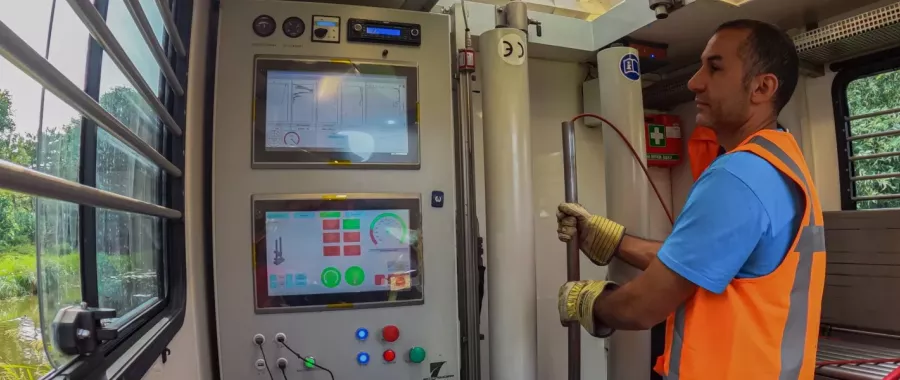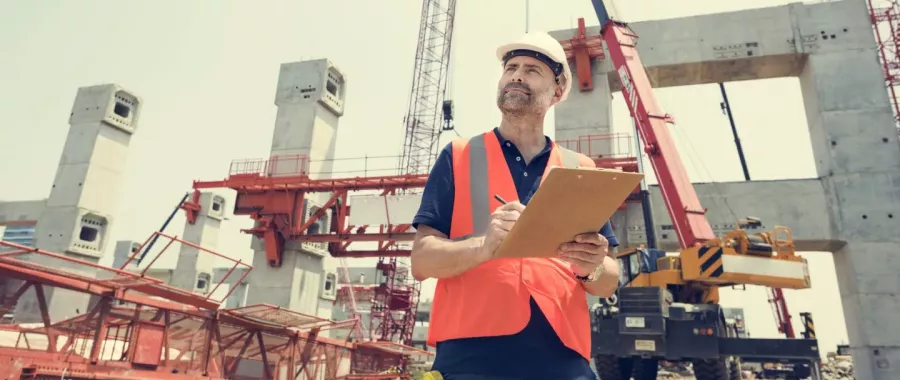To obtain a good overview of the structure of the underground, not only probes and tests but also drilling is always used.
Drilling makes it possible to gain more insight into the composition of the various soil layers; at the same time it is also possible to take soil samples for geotechnical tests in the laboratory, standpipes can be placed or borehole measurements carried out.
When drilling is carried out in the context of a geotechnical survey, disturbed and undisturbed soil samples are normally taken. The depth at which this happens is adapted to the previous CPTs. The mechanical properties of the soil samples can be determined in our geotechnical laboratory by classification and strength and deformation tests. These properties are important for the geotechnical design of, among other things, building foundations, construction pits, dewatering, dike reinforcement and infrastructural projects.
Drilling can be done manually or mechanically, each has its own, specific area of application.
Manual drilling
Manual drilling offers a quick and easy way to gain insight into the soil structure down to a maximum depth of 5 to 6 m. In addition, it is possible to get an idea of the current groundwater level, but also of the variation in the groundwater level. Where necessary, a standpipe can be placed to further monitor the groundwater level.

Talk to our experts
Manual drilling can be carried out at almost any location since no heavy equipment is needed and relatively few materials. Manual drilling causes little or no damage to the site.
It goes without saying that during manual drilling, disturbed samples can be taken, but also undisturbed samples. The use of Kopecky rings is not recommended. SOCOTEC uses mini Ackerman sampling tubes. The quality of these samples is many times better than that obtained with Kopecky rings. Compared to normal Ackerman sampling tubes, the mini version is much easier for the drilling foreman.
Mechanical drilling
SOCOTEC carries out a wide range of drilling. In the Netherlands, however, geoprobe drilling, pulse drilling, auger drilling or core drilling is normally carried out .
To carry out pulse and auger drilling, SOCOTEC amongst other things use over Nordmeyer drilling rigs (video).
For a complete overview of the drilling equipment that SOCOTEC has at its disposal, please refer to the drilling equipment page.
Pulse drilling
Pulse drilling provides high-quality soil characterisation and is extremely well suited to installing standpipes or taking undisturbed samples. The drilling is carried out in accordance with NEN-EN-ISO 22475-1.

Pulse drilling is carried out within a steel casing, the diameter of which depends on the drilling depth and the number of standpipes to be placed.
Disturbed samples can be taken from the soil that is pulsed out of the casing. Undisturbed samples are taken with an Ackerman soil probe. This allows thin-walled steel tubes to be driven into the ground by hitting or pressing. SOCOTEC use a wireline, hydraulic sample pressure device it developed itself, with which the tubes are pressed into the ground (piston sampler). This allows high-quality, undisturbed samples to be taken. All sample tubes are capped/taped and labelled with all metadata. If necessary, the tubes can be weighed in the field and stored refrigerated.
After the final depth of the bore has been reached, the casing is pulled and the cohesive layers are sealed with bentonite granules.
If necessary, standpipes can be placed within the casing. Due to the presence of the casing, filter gravel and a bentonite plug can be placed around the standpipe in a controlled manner.
Other measuring bodies can also be placed in pulse drilled holes such as a SAAF tube or extensometers.
Geoprobe drilling
With Geoprobe drilling, the drilling pipes are hammered to depth with an internal liner using a high-frequency percussion hammer. After pulling the drilling pipe, the liner can be cut open and the “undisturbed” sample is visible. The sample is well suited to proper identification of the various soil layers and simple classification tests. The samples are not suitable for strength testing.
With geoprobe drilling, standpipes can easily be placed using a lost tip.
Hollow auger drilling
Hollow auger drilling is used mainly when rubble or gravel is present in the underground. Other drilling techniques cannot then be used. Auger drilling is also often used for batch sampling.
The disadvantage of hollow auger drilling is that the soil characterisation is less accurate and therefore the sampling is as well.
Wet drilling
In contrast to pulse drilling, wet drilling does not use steel casing.
A bit is attached to the drill shank which is rotated down into the ground by a drilling unit. At the same time, water is pumped downwards (under pressure) through the drill shanks. The water flows back up to the surface along the outside of the shanks, taking the drilled material back up with it. The drilled hole stays open, due to the lateral pressure of the water. The water is caught in rinsing tanks or basins, where the sediment brought up can settle. The clean water can be reused. It is important for the drilled hole to always remain full of water. This is easy to achieve by connecting the drilled hole directly with the rinsing tank or basin. If the drilling is to occur in coarse sand, additives can be added to the water is necessary.
The advantage of wet drilling is that it is possible to drill to fairly large depths. The disadvantage is that only an overall drill description is possible. Wet drilling is above all suitable for placing standpipes or measuring bodies, but it is not suitable as a (high-quality) geotechnical drilling method when reliable (un)disturbed samples are required.
Core drilling
Core drilling is performed in rock. Which is also the reason that it is rarely used in the Netherlands, at most in southern Limburg. SOCOTEC has the equipment and the knowledge to carry out this type of drilling.
Want to know more about our missions?






